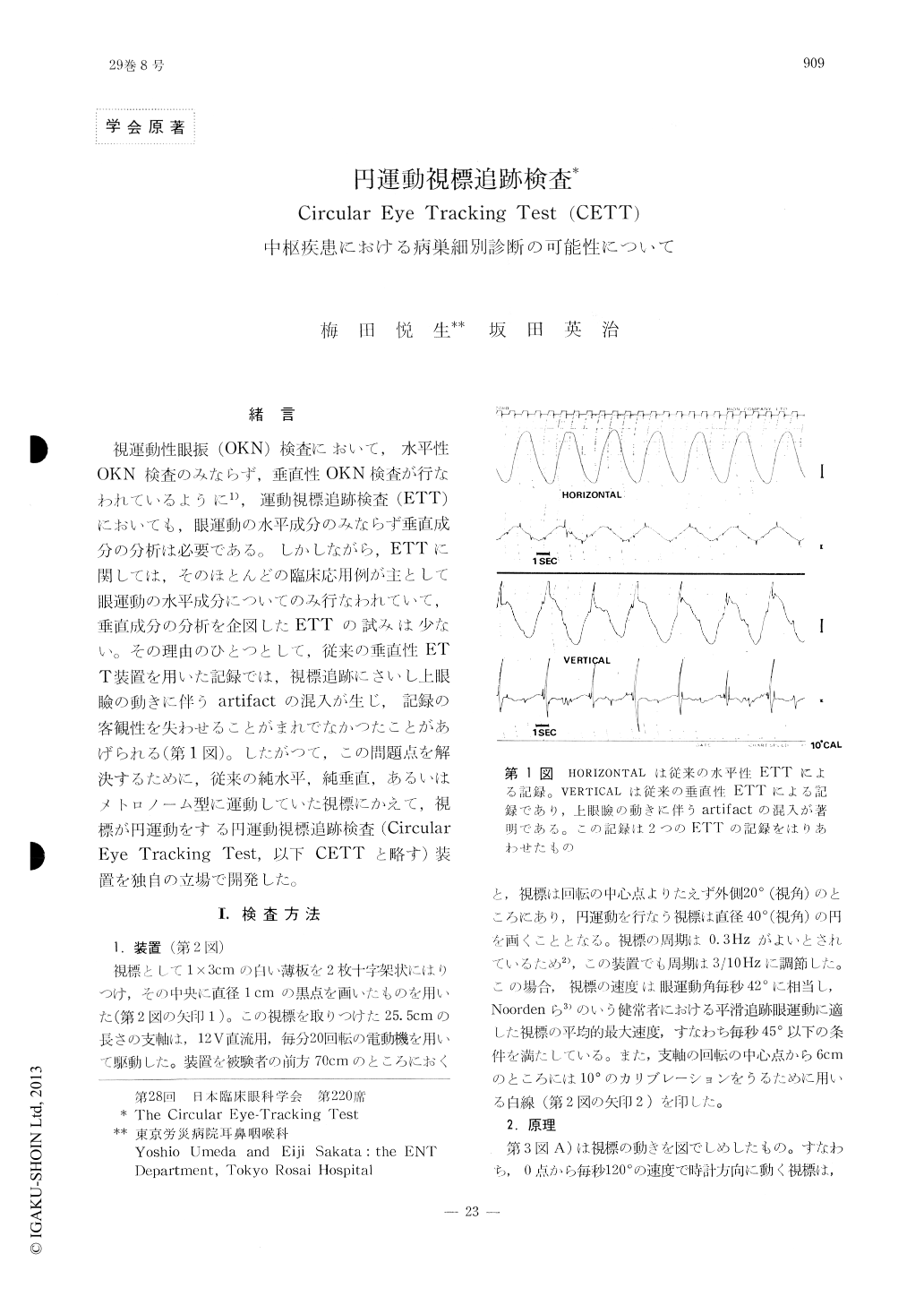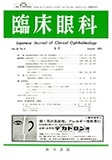Japanese
English
- 有料閲覧
- Abstract 文献概要
- 1ページ目 Look Inside
緒言
視運動性眼振(OKN)検査において,水平性OKN検査のみならず,垂直性OKN検査が行なわれているように1),運動視標追跡検査(ETT)においても,眼運動の水平成分のみならず垂直成分の分析は必要である。しかしながら,ETTに関しては,そのほとんどの臨床応用例が主として眼運動の水平成分についてのみ行なわれていて,垂直成分の分析を企図したETTの試みは少ない。その理由のひとつとして,従来の垂直性ETT装置を用いた記録では,視標追跡にさいし上眼瞼の動きに伴うartifactの混入が生じ,記録の客観性を失わせることがまれでなかつたことがあげられる(第1図)。したがつて,この問題点を解決するために,従来の純水平,純垂直,あるいはメトロノーム型に運動していた視標にかえて,視標が円運動をする円運動視標追跡検査(CircularEye Tracking Test,以下CETTと略す)装置を独自の立場で開発した。
Almost all of the conventional clinical reports on the Eye-Tracking Test are made on the ho-rizontal component of the smooth pursuit func-tion of ocuiomotor system ; few are made on the vertical component. One reason is that during the conventional vertical Eye-Tracking Test the artifacts caused by movement of the upper eyelids often make it difficult to analyze the data. To overcome this problem the authors have developed a method to record simultane-ously the horizontal and vertical components of eye movement in the Eye-Tracking Test, and moreover to reduce these artifacts as much as possible.

Copyright © 1975, Igaku-Shoin Ltd. All rights reserved.


